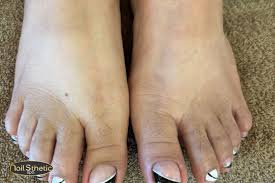Losing an aligner tray is one of those heart-sinking moments that many London patients experience at least once during invisible braces treatment. Whether a tray vanished in a café after lunch near Liverpool Street, disappeared during a gym session in Battersea, or slipped out of a jacket pocket on the Tube, it happens. The good news is that a lost tray rarely derails your journey if you act quickly and follow a clear plan.
First things first: don’t panic—timing matters most
Tooth movement with clear aligners is incremental. Each tray is designed to make small changes over a specific wear period, typically about one to two weeks. If you lose your current tray, the key variable is how long you’d already worn it. If you were only a day into the stage, your teeth may not have fully adapted to that tray’s movement. If you were nearly ready to switch, your teeth may be very close to the next stage already. Either way, your aligner provider can advise, but you can make smart interim decisions that preserve progress.
The same-day action plan when a tray goes missing
As soon as you realise the tray is missing, contact your London aligner clinic. A quick phone call or message gives your provider a timestamp and helps them decide whether to move you forward, step you back, or order a replacement. While you’re waiting for instructions, put in the most suitable alternative you already have at home. If you were early in the stage, the safest temporary option is usually the previous tray, because it will fit comfortably and prevent any drift. If you were at the very end of the stage—say, day twelve of a fourteen-day plan—your provider may green-light moving to the next tray. The decision hinges on fit and comfort: anything that feels excessively tight or painful is likely too big a jump.
How to choose between the previous tray and the next tray
Patients often ask whether it’s better to backtrack or leap forward. The general principle is to maintain the best fit. When you put in the previous tray, it should seat fully and feel snug without causing new soreness. If it does, you’ve prevented your teeth from moving backwards. When you try the next tray near the end of a stage and it fits with only mild pressure, you may be able to continue as planned. If the next tray doesn’t seat fully, don’t force it, because excessive pressure can cause pain, rubbing, and poor tracking. In that case, wearing the previous tray while you wait for a replacement is the safer choice.
What to do if you’re very early, mid-stage, or late in the stage
If you lost the tray on day one or two, revert to the previous tray and call the clinic. Your provider will usually recommend a replacement rather than pushing you forward too soon. If you’re mid-stage—roughly day five to nine—ask the clinic whether a cautious move to the next tray is possible. Often, the advice will be to test the next tray for fit, and if it doesn’t seat, return to the previous one until a replacement arrives. If you’re late in the stage—days ten to fourteen—moving to the next tray is commonly acceptable if it feels secure and seats properly. Even then, follow your provider’s exact guidance, which may include adding an extra couple of days in that next tray to compensate.
Why continuous wear really matters for invisible braces
Aligner therapy relies on consistent wear—usually twenty to twenty-two hours per day. Teeth have a natural tendency to relapse when pressure is removed, especially in the first twenty-four to forty-eight hours without a tray. That’s why acting the same day is so important and why switching to a previous or next tray promptly helps avoid setbacks. A short gap, like a few hours, is unlikely to cause problems, but leaving it for a full day or longer increases the risk of soreness and tightness when you resume, and it may extend your overall treatment time.
Ordering a replacement tray and how it fits into your treatment
If your London clinic decides to reprint the missing stage, they’ll either use your original digital scan or invite you in for a quick review to confirm tracking. Replacement timelines vary by provider and lab, but many clinics can source a replacement relatively quickly. During this interim period, you’ll either wear the previous tray to hold your position or move ahead with the next tray if you were near the end of the stage. Your orthodontic team will note the deviation in your schedule and advise whether to add a few extra days later to keep both arches moving together.
What if both previous and next trays are missing or damaged?
It’s rare, but if you don’t have a usable tray, contact your clinic immediately. They may ask you to come in for a quick assessment to ensure there’s no soft-tissue irritation or unwanted tooth movement. Depending on the complexity of your case, the clinic can prioritise a replacement or plan a short course correction. In complex adult cases—rotations, crowding, or bite changes—the provider will keep a close eye on tracking to avoid compounding the problem.
Comfort, fit, and “chewies” while you’re getting back on track
If you switch to a previous or next tray and it feels a touch looser or tighter than normal, that’s expected in the first hour or two. Ensure the aligner is fully seated along the biting edges and around attachments. Many clinics give patients “chewies”—small foam cylinders you gently bite on to help seat aligners. Using these for a few minutes, a few times a day, can improve fit and reduce any slight gap between the tray and the tooth surface. If discomfort persists beyond normal settling, ask your clinic for a brief review.
London life hacks to avoid losing trays again
The pace of London life—packed commutes, quick lunch breaks, after-work gym classes—makes trays easy to misplace. Build a simple routine around meals: remove the tray in a bathroom, rinse, place it in a labelled hard case, and put the case in the same compartment of your bag every time. Never wrap aligners in napkins, because that’s the most common way they end up in the bin at restaurants. Consider keeping a spare case at the office, another at home, and a small travel kit for nights out or weekends away. A consistent habit is the best insurance against another lost tray.
Costs, finance, and how pricing policies handle replacements
Patients often discover pricing nuances at the worst time—when a tray goes missing. Before you begin, ask your clinic exactly how lost or broken trays are handled. Some providers include one or two free replacements per course; others charge a modest lab fee for reprints; and some bundle replacements into a comprehensive care package. When you’re comparing the invisible teeth braces price, the invisible braces price, or the clear aligners price among providers in London, it’s worth digging into these policy details rather than just the headline figure. A transparent plan that includes check-ups, refinements, emergency reviews, and at least a limited number of replacements can prevent surprises. If you’re researching clear braces London and weighing costs, ask whether 0% finance is available, whether refinements are included, and how many review appointments you’ll receive. These inclusions can change the real-world value of the treatment more than a small difference in the initial quote.
Refinements and mid-course corrections if tracking drifts
Even when patients never lose a tray, small tracking deviations are common because every smile responds a little differently. That’s why most modern London clinics plan “refinements,” which are additional sets of trays near the end of treatment to perfect positions. If your lost tray leads to a slight mismatch later, refinements will usually tidy this up. They can also be an opportunity to fine-tune bite contacts or polish small black triangles once alignment is complete. When you assess the clear aligners price, it’s prudent to ask whether refinements are included and how many rounds you’re entitled to under your plan.
What not to do after losing a tray
It can be tempting to “wait and see” or to skip ahead several stages to keep pace with a calendar date. Avoid both. Waiting without a tray risks relapse and soreness when you start again, while jumping too far ahead can create poor tracking that’s difficult to correct. Don’t attempt to heat or reshape an aligner at home to make it fit after a lapse; you can distort the plastic and compromise tooth movement. Keep the decision-making simple: previous tray if you’re early, next tray if you’re late and it seats well, and clinic guidance to confirm the plan.
How long can I go without wearing a tray before it becomes a problem?
There isn’t a universal number that applies to every mouth, but as a rule of thumb, a gap of a few hours is unlikely to cause meaningful movement. Beyond half a day, some teeth can begin to rebound. After a full day or longer, tightness and poor seating are common when you try to restart, and soreness can increase. That’s why London providers emphasise rapid communication and wearing whichever tray fits best in the meantime. If you do experience a gap of more than a day, let your clinic know; they may advise extra time in the next aligner or a brief return to the previous one.
What about retainers if I’ve lost a tray near the end of treatment?
If you’re at the final stages and a tray goes missing, your clinic may accelerate you to retainers—especially if your finishing positions are already excellent. Retainers are different from aligners; they’re designed to hold the result rather than move teeth. Your provider will advise whether it’s appropriate to move to retainers or whether one last replacement tray is needed to finish strong.
Gum health, attachments, and avoiding irritation after a switch
A switch to a previous or next tray may temporarily irritate the gums or cheeks where attachments create pressure. Rinsing with lukewarm saltwater and using orthodontic wax on sharp edges helps. Make sure you’re brushing and flossing before putting trays back in, because food debris trapped by a tighter tray can increase tenderness. If any edge feels rough, your clinic can smooth it in a quick visit.
Bringing it back to value: choosing the right London provider
When you look beyond headline marketing, “value” in aligner care is a mix of clinical oversight, appointment access, refinements, replacement policies, and the overall patient experience. This is why the invisible teeth braces price, the broader invisible braces price, and the clear aligners price in London deserve a closer read than a single number on a leaflet. An experienced clinician, predictable timelines, friendly same-day support for emergencies like a lost tray, and refinements included are often worth more than a marginally lower fee. If you’re comparing clear braces London options, ask specifically about lost-tray protocols, turnaround time for reprints, and whether mid-course reviews are included. Those details are exactly what transform a potential setback into a minor blip.
The bottom line: a lost tray isn’t the end of the world
Invisible braces work because small, consistent forces add up to big changes over time. Losing a tray interrupts that rhythm, but your smile won’t unravel if you respond quickly. Get in touch with your London clinic the same day, wear the best-fitting alternative you have, and follow professional advice about replacements or moving forward. Keep a spare case, develop a simple habit around meals, and consider carrying the previous or next stage when you’re out and about. With those safeguards in place, you’ll protect your progress—and your timeline—without stress.




